Ridley Scott’s Gladiator 2 promises epic battles, political intrigue, and an arena full of historical inspirations—some accurate, some not so much. While it brings to life fascinating details like Geta and Caracalla’s rivalry and the surprisingly progressive concept of gladiators having doctors, it takes a few creative liberties along the way. Whether it’s the laughably fictional inclusion of sharks in the arena or the unexpectedly accurate casting of Denzel Washington as the dark-skinned Macrinus, the film is as much a spectacle as it is a reimagining of Roman history.
10. Geta and Caracalla’s Rivalry – Right
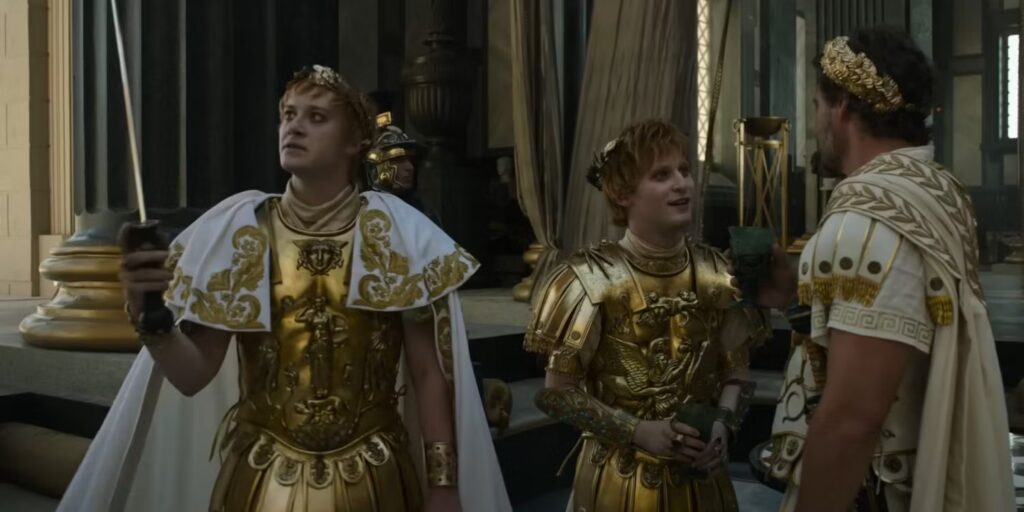
Gladiator 2 gets more than a few things wrong about the twin siblings, G and Caraca, who rule over Rome as co-emperors. Some victories are still yet to come for the film, though.
First things first: they were not twins. Caraca was at least a year older than G. In the movie, Emperor Gator is portrayed as a sadistic, ruthless leader, ruling Rome alongside his fraternal twin, Emperor Caraca. However, while the film does depict their rivalry, the brothers were even more antagonistic in reality.
They didn’t just fight for power—they actually considered splitting the empire into two. Caraca was to rule the West, and G would rule the East. The two emperors reportedly refused to be in each other’s presence without their mother, Julia Domna, who is absent from the film.
While Julia Domna did help maintain peace for a time, the brothers ultimately didn’t know how to share power.
9. Caracalla’s Monkey – Wrong
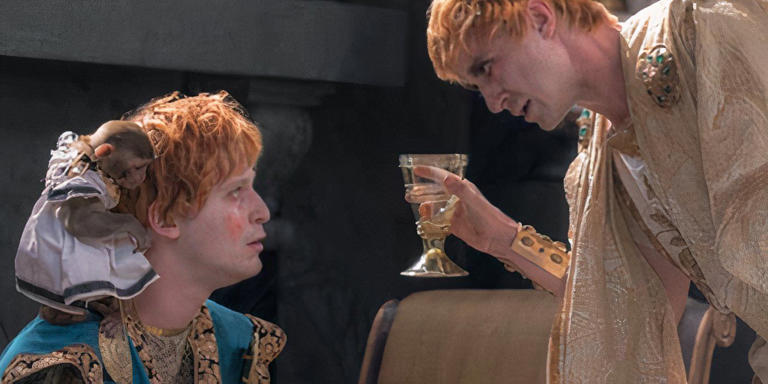
After his brother’s demise, Caraca grants the title of consul to his most trusted ally: his pet monkey. This moment, though funny and a little crazy, is historically inaccurate. Caraca didn’t have a monkey that wore a little Roman outfit and a diaper.
Now, I love Ridley Scott films, but I never thought I’d see a monkey on someone’s shoulder in a Gladiator movie! While it’s fun, this plot point is rooted in myth. There were rumors that Caraca had a deep affection for his horse. In fact, he supposedly adored it so much that he wanted to make his horse a consul or even a senator.
Of course, this is also just a legend—most historians agree that it’s either exaggerated or untrue. But hey, if the film wanted to go all out with Caraca’s madness, they might as well have made him go bananas!
8. Gladiators Had Doctors – Right
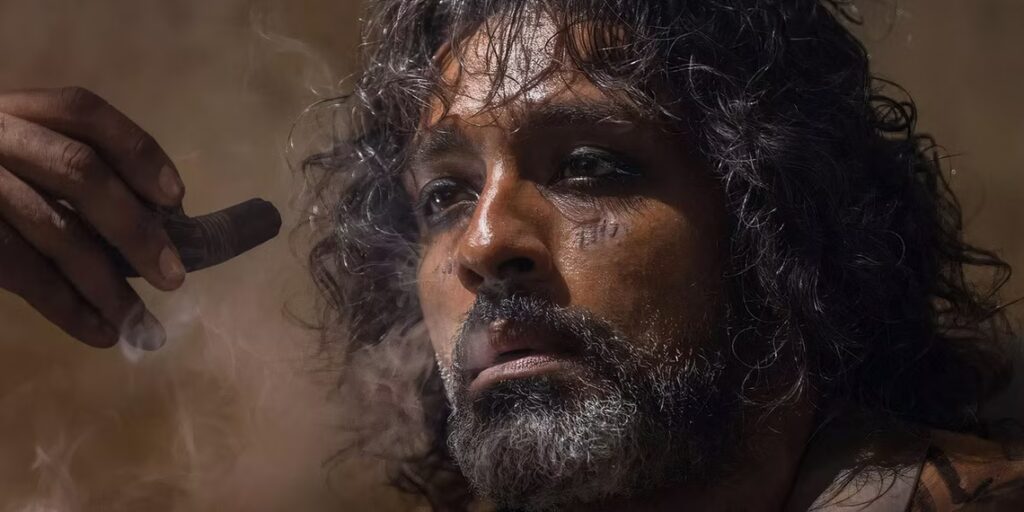
Upon becoming a gladiator, Lucius Hano Veris befriends Ravi, a doctor who once fought in the arena before winning his freedom. “There is plenty of pain waiting for you in the next life,” Ravi says.
While Ravi isn’t based on any specific historical figure, there is evidence to suggest that gladiators did, in fact, receive medical aid. One might assume otherwise, considering many gladiators were slaves who occasionally fought to the death. But seeing how gladiators were essentially the ancient Roman equivalent of athletes, it makes sense that they would have a team of physicians to keep them in fighting shape.
One of the most famous of these physicians was Galen of Pergamon. He treated gladiators, keeping many alive, and even studied their dead bodies for medical research. Eventually, Galen would leave the arena to become the personal physician to four Roman emperors.
Although there weren’t many gladiators who turned into doctors, Ravi isn’t out of place here.
7. Sharks in the Arena – Wrong
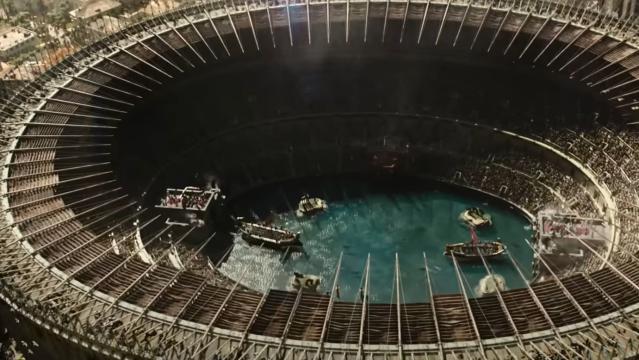
How do you top the tiger from the first film? By pitting the hero against baboons, rhinos, and sharks! It’s all in good fun, but are Lucius’s animal opponents historically accurate?
In general, gladiators rarely faced animals. When they did, baboons weren’t entirely uncommon. It’s believed that rhinos might have appeared at the colosseum, though it’s unlikely that a warrior ever rode one and charged at an opponent.
But the toughest pill for historians to swallow is the presence of sharks in the arena. There’s nothing concrete supporting this, and even in the movie’s context, it’s unclear how the sharks would have been transported from their natural habitat to the colosseum.
As cool as the action is, history buffs might argue that this is where the film “jumps the shark.”
6. Flooded Colosseum Battles – Right
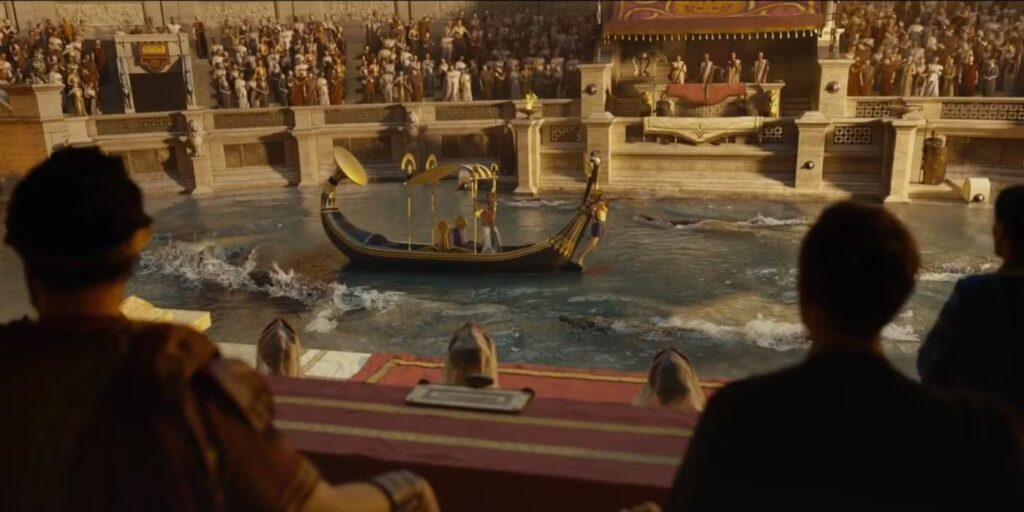
While the shark battles may be pure fiction, the flooded Colosseum set piece in Gladiator 2 isn’t without historical backing. Ready to dive in? After all, the Colosseum was constructed on the site of an artificial lake. Although they drained the lake, the Colosseum had a hydraulic system beneath the amphitheater to supply water.
This network of circular channels distributed the stored water quickly and evenly onto the arena floor. Commemorating the Colosseum’s completion in AD 80, Emperor Titus is said to have held two mock naval battles, which were part of other aquatic spectacles held in natural and artificial bodies of water around Rome. This meant that the Colosseum had to be flooded—a feat made possible thanks to the structure’s waterproof concrete.
Naval battles at the Colosseum were eventually retired, with the last recorded one being held in AD 248. The timeline in Gladiator 2 is a bit off, as the movie seems to take place around AD 180, but aside from a few historical gripes, this sequence surprisingly contains a boatload of truth.
5. Geta’s Beheading – Wrong
Gladiator 2 portrays Macrinus as a puppet master, manipulating Caraca into beheading his brother, shoving the blade into his hand, and doing half the work himself. “Whose head could I give you that would satisfy this fury?” Macrinus even keeps the head for show and tell at the Senate.
However, there’s no proof that Macrinus played a role in the co-emperor’s assassination. While Caraca was likely responsible for Geta’s death, the actual events played out much differently.
After concluding that his brother had to die, Caraca initially tried and failed to kill Geta at the Saturnalia festival. When that didn’t work, Caraca asked his mother to set up a peaceful negotiation. Geta showed up without any guards, allowing Caracalla’s centurions to assassinate him.
The image of Julia Domna—who had once held the reins of imperial power—cradling the lifeless body of her son would haunt the empire for generations. With Geta dying in his mother’s arms, Caraca became the sole emperor for the time being.
4. Macrinus Was Involved in Caracalla’s Death – Right
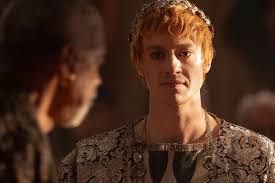
Macrinus might not have been behind Geta’s death, but Caracalla is another story. Granted, the film takes some huge liberties, as Macrinus stabs Caracalla through the ear in the colosseum and subsequently declares himself emperor. While it’s definitely the Hollywood version, Macrinus was part of a conspiracy to murder Caracalla.
Macrinus served as Caracalla’s Praetorian prefect—“Let the gods decide his fate,” Godd—although his exact motivations are debatable. Macrinus was reportedly concerned for his well-being under Caracalla’s rule. To save his life, Macrinus allegedly enlisted a soldier named Justin Marialis to assassinate Caracalla.
After Caracalla’s death, Rome went a few days without an emperor until Macrinus seized control for himself. Caracalla died without a son, so there was no obvious heir. Even if Gladiator 2 speeds through the process, Macrinus’s ascension to power was more than likely soaked in blood, and he’d only give it a push.
3. Macrinus Died in Battle – Wrong
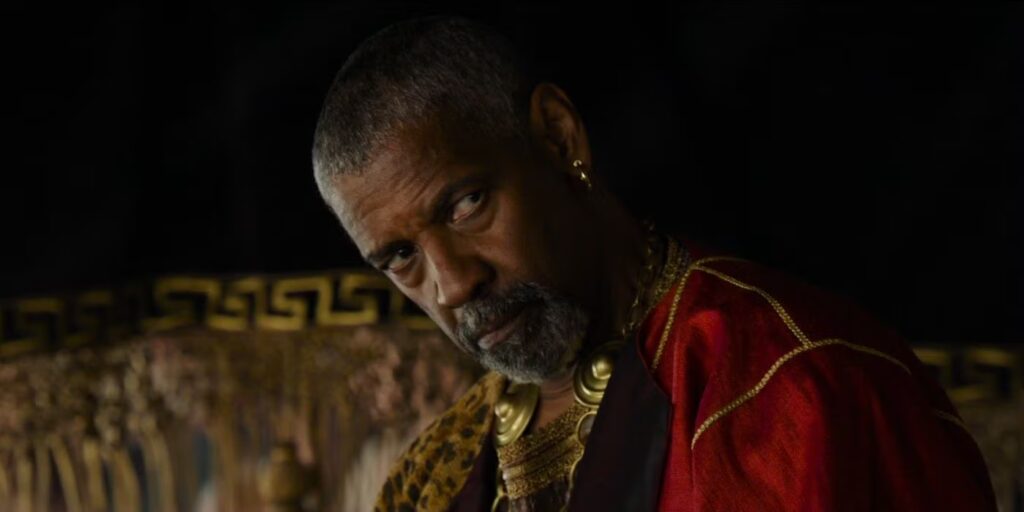
In the film, Macrinus is basically emperor for less than a day. Almost immediately after killing Caracalla and Lucilla, Macrinus squares off with a vengeful Lucius. Their duel culminates with Lucius slaying Macrinus and declaring himself the throne’s true heir. “You will be my instrument!” “I will never be your instrument, in this life or the next!”
While Marcus’s time as emperor was short-lived, in real life, it wasn’t that brief. He didn’t lose his arm and life in a glorious battle either. Rumors started circulating that Caracalla had an illegitimate son named Elagabalus, who was actually his cousin. Even so, Elagabalus soon became Rome’s new emperor, ending Macrinus’s roughly year-long reign.
Although Macrinus tried fighting to remain in power, he was ultimately captured after an escape attempt. Macrinus was executed, with his head being sent to Elagabalus.
2. Macrinus Was Dark-Skinned – Right
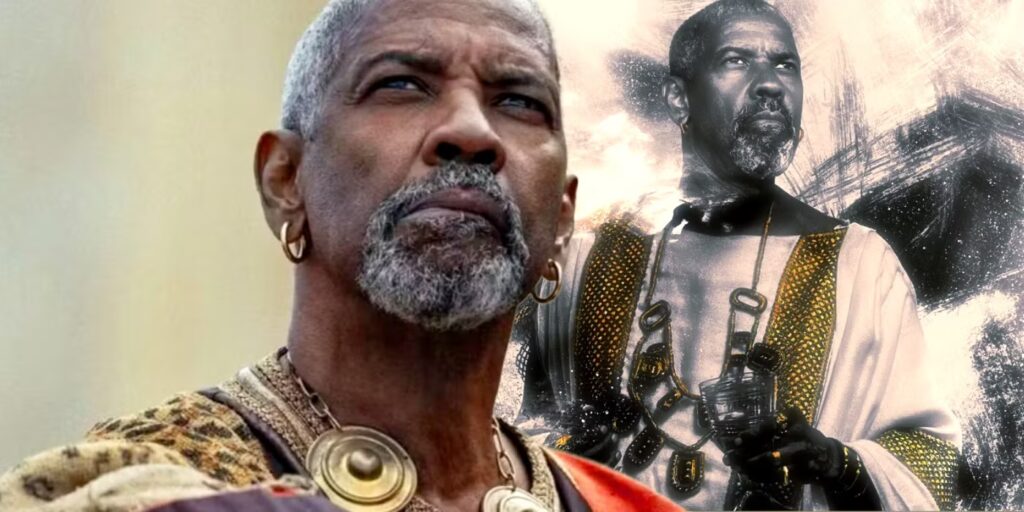
When it was announced that Denzel Washington would be playing an emperor of ancient Rome, many online argued that the filmmakers were prioritizing diversity over historical accuracy. This is what they believed. Those people clearly did not do their homework.
With a Berber heritage, Macrinus was born in what has since been established as Algeria, North Africa. While depictions of Macrinus have been whitewashed in the past, modern historians believe that Macrinus’s complexion was dark.
The film doesn’t get everything about Macrinus right. There isn’t much evidence supporting the claims that Macrinus was a former slave or that he owned gladiators. In fact, gladiators were usually prisoners of war. Yet, Washington’s casting isn’t at all off-base. Macrinus wasn’t necessarily the first black emperor, as the Libya-born Septimius Severus was also said to have had dark skin.
1. Virtually Everything About Lucius – Wrong
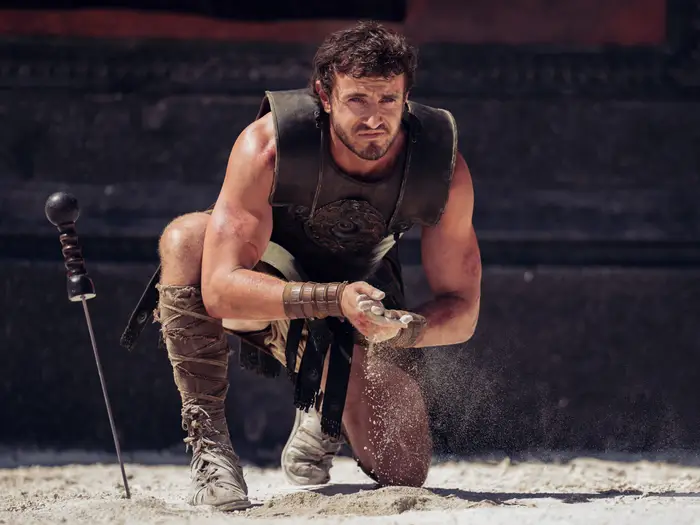
Maximus Decimus Meridius isn’t real, but Lucius Varys indeed exists. “I remember that day. I never forgot it.” The fact that Lucilla was his mother is pretty much the only thing about Lucius that Gladiator gets right.
Not only did the real Lucius die at a young age, but he hadn’t even become emperor yet. In the film, Lucius is forced to flee Rome following Commodus’s death to Africa. He loses a wife who never existed during a battle in Numidia that wouldn’t have occurred around this time. He develops a grudge against the fictitious Roman general, Marcus Aurelius, who is married to his mother.
Although she’s middle-aged upon reuniting with her son, the real Lucilla was executed in her early 30s. And that is what we call revisionist history. “Take your father’s strength. His name was Maximus, and I see him in you.”







